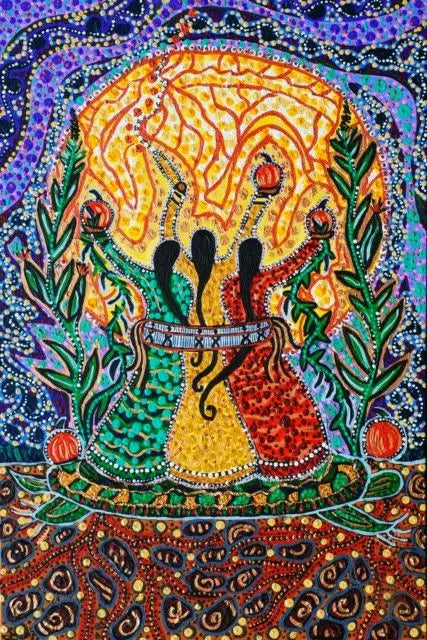The Three Sisters

At Laroot, we source our ingredients from farms and suppliers right in our backyard. But long before we relied on the fertile soil beneath our feet, Native Americans called the same land home. Over thousands of years, they developed a profound relationship with nature and discovered ingenious agricultural techniques that can still be applied today. There is no better example of this than the fable of the Three Sisters.

As it’s told in Robin Wall Kimmerer’s Braiding Sweetgrass, on a cold winter night three beautiful sisters entered a dwelling to seek shelter by a fire. One was tall and slim, wearing yellow; another was a petite beauty, wearing green; the third was voluptuous and sultry, wearing orange. Though food was scarce and the householders did not know the strangers, they welcomed them and shared what little provisions they had. The three sisters were grateful, and in return revealed their true identities—corn, beans, and squash. They gave themselves as seeds to the generous people, so, no matter the season, they would never go hungry again.

Indigenous peoples of America know the magical trifecta of corn, beans, and squash as the “sustainer of life,” and have been planting these crops together for millennia. The plants grow entangled, mutually benefiting from each other’s protection, harmonious in their reciprocity. The corn grows eight feet tall and supports the climbing bean vines that wrap around it; the beans fix nitrogen in the soil for the feeding requirements of the corn and squash; the squash provides mulch and root protection for the corn and beans.
"The organic symmetry of forms belong together; the placement of every leaf, the harmony of shapes speak their message. Respect one another, support one another, bring your gift to the world and receive the gifts of others, and there will be enough for all."
- Robin Wall Kimmerer in Braiding Sweetgrass: Indigenous Wisdom, Scientific Knowledge, and the Teaching of Plants

The Three Sisters are planted together for optimal growth, and eaten together for optimal nutrients. Their constitution is complementary in the best of ways, just as sisterhood should be. Squash gives vitamins in the form of carotene, beans give protein, and corn provides starch.
This fable is the basis for our Three Sisters Stew, which relies on the same symbiosis of corn, beans, and squash that has nourished Native Americans since the beginning of time.
